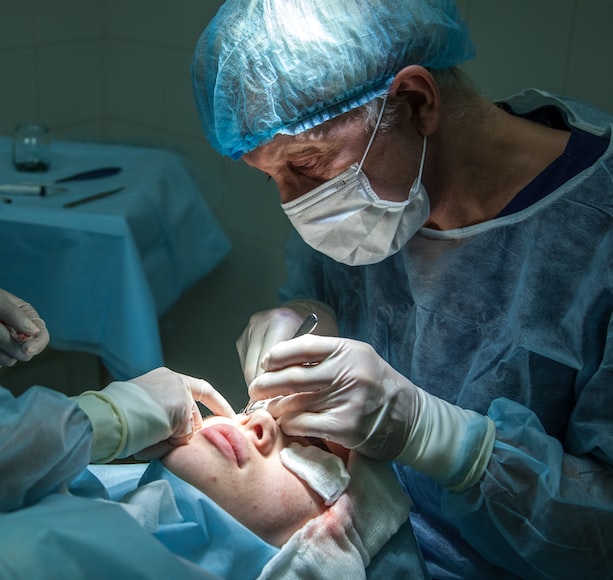June is Cataract Awareness Month. A condition typically associated with aging is the leading cause of blindness around the world. While aging accounts for the highest numbers, it isn’t the sole cause. So before we step into its awareness month, it is important that we learn more about the condition, the signs to look out for, and the possible treatments.
What Is A Cataract?
A cataract is defined as a cloudy area that forms on the lens of the eye. Your lens is a clear, flexible structure that is mostly made up of water and protein. The protein (crystalline) is arranged in a precise way to ensure that the lens not only remains clear, but that light passes through it.
With cataracts, these proteins break down, forming cloudy clumps that prevent the lens from sending clear images to the retina. The retina is a tissue lining that is sensitive to light, located at the back of the eye. It works by converting the light that comes through the lens into signals, which are sent to the optic nerve, then to the brain.
In its early stages, a cataract may not cause a problem. While cloudiness may initially affect a small part of the lens, it can grow larger over time and affect more of the lens.
Different Forms
There are different forms of cataracts. These include:
1. Age-related cataracts
This is the most common form of cataracts, which tend to develop between the ages of 40 and 50 years. While it is not entirely clear why your likelihood of developing it increases as you get older, some things have been identified as potentially increasing your risk. These include
- Smoking
- Drinking too much alcohol
- Long-term use of steroids
- A family history of cataracts
There are three kinds of age-related cataracts, namely:
- Nuclear Sclerotic Cataract: This kind develops slowly, forming over a period of years. Visual impairments lead to the nucleus hardening and turning yellow. This leads to nearsightedness and blurry vision.
- Cortical Cataract: This kind is likely to impact older patients impacted by diabetes, with the most common symptom being excessive glare. It can develop at different rates. So while it develops over a few years for one person, it can develop over a few months for another.
- Posterior Capsular Cataract: This kind is less age-related than the first two, usually impacting older patients who use steroids or have diabetes. When it develops, the area behind the lens becomes opaque, leading to symptoms such as sensitivity to bright lights and excessive glare.
2. Traumatic Cataracts
This form is defined by a clouding of the lens that occurs after ocular trauma that disrupts the lens fibers. A traumatic cataract can develop due to various reasons, including:
- Blunt trauma: As the most common cause of eye injury, this occurs when the eye is hit by a ball, fist, or any blunt object, without cutting it.
- Penetrating trauma: This takes place when the eye is pierced
- Radiation exposure: This takes place when you experience excessive sun exposure (UV), exposure through work (e.g. X-ray technician), or medical treatment (e.g. a cancer patient receiving radiation therapy).
A traumatic cataract can develop within weeks of the injury to the lens, or it can take months or even years.
3. Congenital Cataracts
This form of cataracts is present at birth. It is rare, with no causes being found in most cases. Possible causes include:
- A genetic fault is inherited from the child’s parents, causing the lens to develop abnormally
- Trauma and infection from the uterus
- Certain genetic conditions, including Downs syndrome
- Certain infections picked up by the mother during pregnancy, including chickenpox and rubella
Symptoms
While they may differ based on the form of cataracts, common symptoms include:
- Blurry vision
- Being extra sensitive to light (glare)
- Seeing bright colors as faded or yellow
- Seeing double
- Poor vision at night
- Increased nearsightedness
- Distortion of vision
- Seeing a halo around lights
- Eyeglasses or contact lenses are not working well anymore

Photo by Olga Guryanova on Unsplash
Tests for Diagnosis
If you’re experiencing any of the above-listed symptoms, your eye doctor can perform one of the following tests to determine whether you have cataracts:
- Slit-lamp exam: A slit lamp is a large, binocular microscope with a bright light source. Typically mounted on a small table, it enables your eye doctor to closely examine your eye under high magnification. This helps them check your lens for cataracts.
- Retinal exam: An eye doctor begins by dilating your eyes with eye drops, which causes your pupil to slowly open. This gives them a better view of your eye, allowing them to examine the retina and optic nerve in the back of the eye. Using an ophthalmoscope, they can examine your lens for signs of a cataract.
- Visual acuity test: This involves using an eye chart to measure how well you can read a series of letters. Your eyes are tested one at a time while you view progressively smaller letters. This allows your eye doctor to determine if you have 20/20 vision, or if you’re showing any signs of impairment or a cataract.
Treatment Options
Most eye doctors suggest that you consider cataract surgery once your cataracts begin to affect your quality of life, and ability to carry out everyday tasks. If contact lenses and prescription glasses aren’t able to help clear your vision, the only effective treatment is surgery.
Cataract Surgery
Cataract surgery involves the removal of the clouded lens, and replacing it with a clear, artificial lens. Called an intraocular lens, the artificial lens is placed in the same place as your natural lens, becoming a permanent part of your eye. While this is generally a safe procedure, there is some risk of infection, bleeding, and retinal detachment. Surgery is currently the only solution for cataracts.
Cataracts can worsen faster in people with certain conditions, including diabetes, obesity, or high blood pressure. So it is important that you consult with your doctor to consider the benefits and risks of the surgery.
Early Diagnosis and Prevention
As is the case with other eye conditions, early diagnosis is essential. It is advised that we have an eye test conducted at least once every two years, and once a year after the age of 50. There are a few things that you can do to reduce your risk of developing a cataract or slow down its effects. These include:
- Wearing protective eyewear when going out in the sun
- Stay away from smoking
- Avoid excessive alcohol intake
- Maintain a regular, healthy weight
- Follow a nutrient-rich diet, including foods high in antioxidants





![women [longevity live]](https://longevitylive.com/wp-content/uploads/2020/01/photo-of-women-walking-down-the-street-1116984-100x100.jpg)









